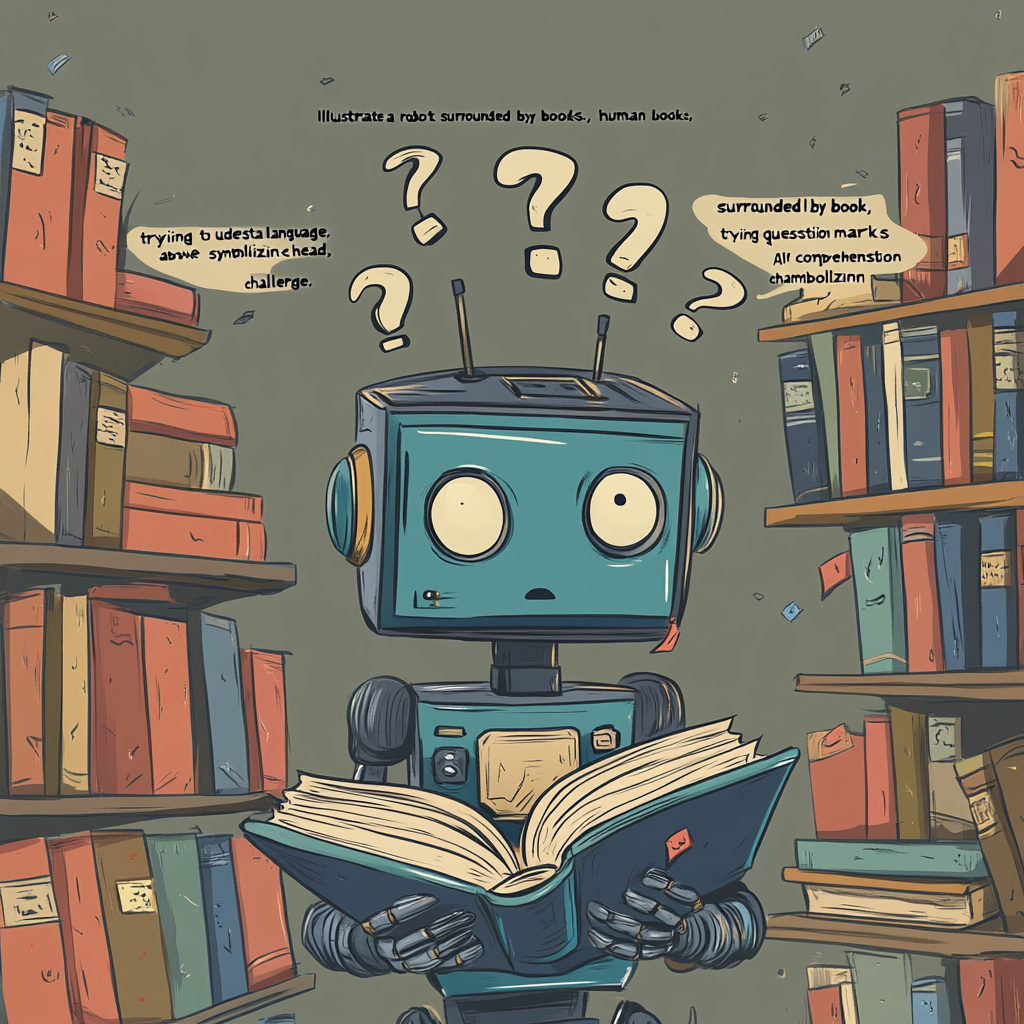
AIs flunk language test that takes grammar out of the equation
In the vivid realm of intelligence, where silicon chips and complex algorithms dance a techno tango, there surfaced a thought-provoking study highlighting the trials of artificial intelligence as it grapples with the nuances of human language comprehension. A team led by the astute Vittoria Dentella from the Universitat Rovira i Virgili (URV) has tossed a few curveballs at the ever-impressive AI models, revealing that despite their tech wizardry, they still fumble in simple language tasks that humans often ace. Oh, the irony!
The study, which made a splash in Scientific Reports, threw 40 questions onto the plates of seven AI contenders, which included star players like Bard, ChatGPT-3.5, ChatGPT-4, Falcon, Gemini, Llama2, and Mixtral. Each answer was then scrutinized and compared with the responses of 400 native English speakers—because, let’s face it, what’s more entertaining than putting machines through their paces, only to watch them stutter when faced with straightforward tasks?
Now, let’s delve into the juicy juice of the findings, shall we? Picture this: in the battle of wits between humans and these so-called large language models (LLMs), the humans emerged with a golden crown of 89% accuracy. Meanwhile, the AI superstar ChatGPT-4 managed to scrape by with a mere 83%. And here we thought we were living in an age where AI was supposed to play the role of the overconfident genius! The rest of the AI gang? They barely broke the 70% ceiling. Ouch! Talk about a reality check.
Humans didn’t just shine in accuracy; they exhibited an enviable consistency, holding steady with their answers 87% of the time when questions were tossed back at them in repetition. On the flip side, our silicone companions wobbled like an inexperienced tightrope walker, showing consistency levels ringing in between 66% and 83%. Are we sure they process data and don’t just throw darts at a board of answers?
The study explored a profound truth: while AI can churn out text that looks spiffy and reads cohesively, there lurks a hollow void where genuine understanding should be. These sophisticated machines aren’t managing to grasp language at a human level—they are merely mimicking patterns learned from heaps of training data. It’s like an actor in a play who nails all the lines but has no clue what the play is actually about. Rather tragic, right? These AI tend to operate in the confines of what they know—like trying to navigate a three-dimensional ballroom after only ever living in a flat world. Do they even know they’re missing the depth?
The implications of these findings ripple through the domain of language learning and testing. You see, folks, while AI tools shine as efficient gatekeepers in language proficiency tests—like the Duolingo English Test or the TOEFL iBT Home Edition—there’s a big ‘but’ here. These assessments may hit the bullseye on grammar, vocabulary, and fluency, yet they often miss the target entirely when it comes to capturing the rich, textured layers of human comprehension.
Let’s talk about the glory of personalized learning! Platforms like Loora, Duolingo, and Memrise promise immediate corrections and a carefully structured environment for thirsty minds seeking knowledge. Yet, we shouldn’t be seduced into believing that these apps alone can unveil the depths of language proficiency, especially when it’s critical. Sometimes, a student needs more than just a correct answer; they need to feel the rhythm and vibe of a conversation. They need heart.
Automated assessments like Hallo pop up like daisies after rain, measuring proficiency with incredible speed and cost-effectiveness. Voila! However, here’s the kicker: they too fall prey to the statistical pattern trap, lacking the human-like finesse that is crucial for genuine conversation and comprehension. Can an AI navigate the complex landscapes of idioms, cultural references, and emotions? Not yet!
In a nutshell, this study shines a rather bright light on a reality we must face: the world of AI has leapt forward in language prowess, but it still stumbles across scenarios that humans navigate with ease. It’s not about dismissing the treasures AI brings into our educational journeys, but about recognizing the balance that’s absolutely essential. AI will remain a steadfast companion in our classrooms, but let’s not forget the irreplaceable magic of human understanding.
So, the next time you feel a rush of pride over that AI assistant helping you compose a stellar email or throwing back quick answers, remember: it’s still got a long way to go before it truly understands the beauty and complexities of our language. It’s a wondrous tool—no doubt! But it’s not here to outshine the nuanced human essence that shapes how we communicate.
For those fascinated by the intersection of artificial intelligence and language learning, I encourage you to dip your toes into the latest discussions, developments, and sometimes even controversies. If that tickles your curiosity, I invite you to subscribe to our Telegram channel for the freshest updates on the marvels of neural networks and automation. Don’t get left behind in the rapid currents of change! Grab that phone! Want to stay up to date with the latest news on neural networks and automation? Subscribe to our Telegram channel: @channel_neirotoken.

